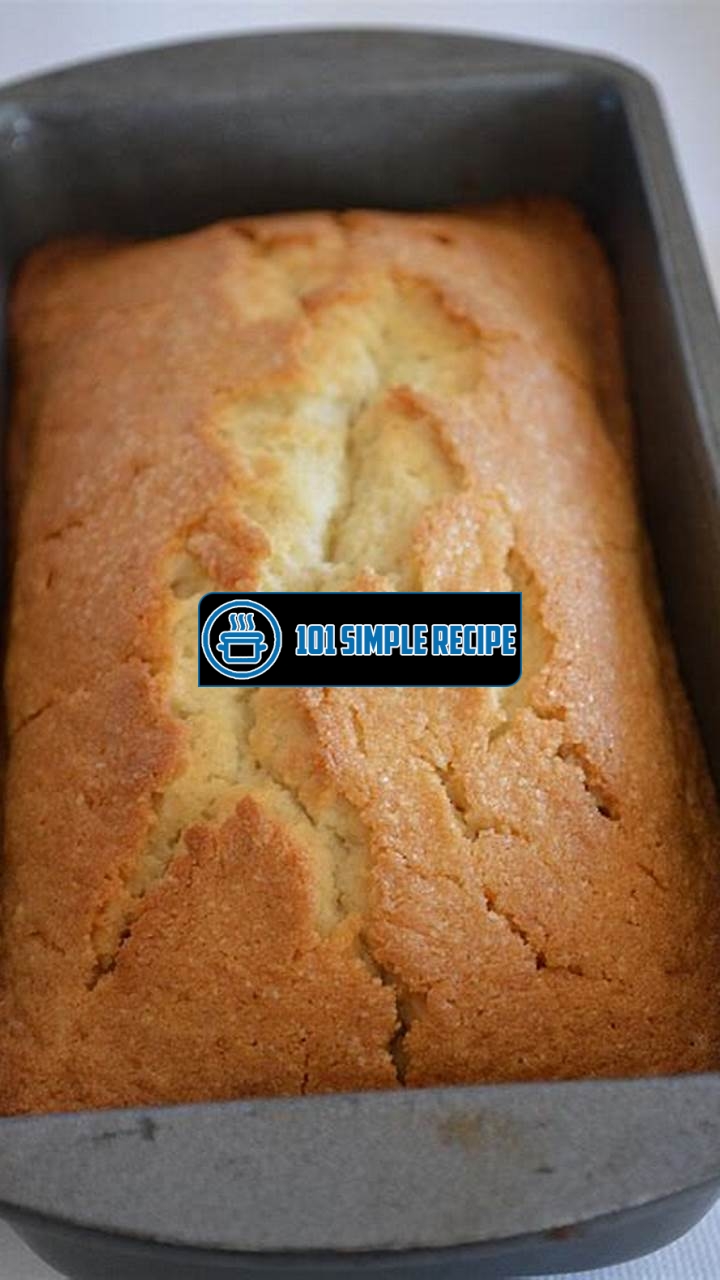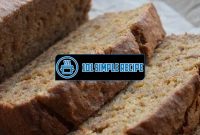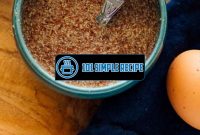Are you looking for delicious treats that are eggless? Look no further! In this article, we will explore a variety of eggless baking recipes that are sure to satisfy your cravings. Whether you have dietary restrictions or simply prefer eggless options, these recipes will not disappoint. From fluffy cakes to chewy cookies, you can enjoy all your favorite baked goods without the use of eggs. So grab your apron and get ready to bake up a storm with these mouthwatering treats!

Understanding Eggless Baking Recipes
Explore the world of eggless baking and learn how to create delicious treats without eggs. In this article, we will delve into the rising popularity of eggless baking, the various substitutes for eggs, and some tips for successful eggless baking.
The Rise of Eggless Baking
Eggless baking has seen a significant surge in popularity in recent years. Whether due to dietary restrictions, allergies, or ethical reasons, many people now opt for eggless recipes to enjoy their favorite desserts. With advancements in baking techniques and ingredient options, it is easier than ever to create delicious treats without using eggs.
One of the key factors contributing to the rise of eggless baking is the increasing awareness of health-conscious consumers. Eggs are often high in cholesterol and can pose a problem for those following a plant-based diet. By eliminating eggs, individuals can still indulge in their favorite baked goods while maintaining their dietary preferences.
Another reason for the prevalence of eggless baking is the growing number of allergies and food sensitivities. Eggs are a common allergen, and many individuals have to avoid them to maintain their health. Fortunately, there are now numerous egg substitutes available to cater to these dietary needs.
Substitutes for Eggs in Baking
When it comes to baking without eggs, there are various substitutes that can be used to achieve the desired texture and taste. Here are some popular alternatives:
- Flaxseed or Chia Seed Eggs: Mix one tablespoon of ground flaxseed or chia seeds with three tablespoons of water to replace one egg. Allow the mixture to sit for a few minutes until it becomes gel-like. These seeds are rich in omega-3 fatty acids and provide moisture to baked goods.
- Applesauce: Replace one egg with a quarter cup of unsweetened applesauce. This fruit puree adds moisture, flavor, and natural sweetness to your baked treats.
- Banana: Mashed ripe bananas work well as a binding agent in recipes, replacing one egg per banana. They also add a subtle sweetness and moisture to the final product.
- Yogurt or Buttermilk: In recipes that require the leavening properties of eggs, yogurt or buttermilk can be used as a substitute. Use a quarter cup of yogurt or buttermilk to replace one egg.
Tips for Successful Eggless Baking
While baking without eggs can be just as satisfying and delicious, it’s important to keep a few tips in mind for successful results:
- Choose the right substitute: Experiment with different egg substitutes to find the one that works best for each recipe. Each alternative has its own unique properties and may affect the texture and flavor differently.
- Pay attention to moisture: Since eggs play a vital role in providing moisture, it’s crucial to ensure the batter or dough has enough liquid. Adjust the liquid content by adding more water, milk, or oil if needed.
- Be patient: Eggless baking may require slightly longer baking times than traditional recipes. Be sure to test for doneness with a toothpick or cake tester before removing from the oven.
- Combine leavening agents: In recipes that require some rise, consider using a combination of baking powder and baking soda to compensate for the leavening properties of eggs.
With these tips and substitutes in mind, you can confidently embark on your eggless baking journey. Enjoy creating delicious treats that cater to various dietary preferences and restrictions!
The Science Behind Eggless Baking
Delve into the scientific principles that make eggless baking possible and understand the role of key ingredients.
Understanding the Role of Eggs in Baking
Eggs play a crucial role in traditional baking by serving as a binder, providing structure and moisture, and aiding in leavening. However, for various reasons like dietary restrictions, allergies, or lifestyle choices, some individuals prefer eggless baking recipes.
Fun Fact: Did you know that eggs have more than 20 different functions in baking? They are versatile ingredients!
When it comes to eggless baking, it’s essential to understand the functions of eggs and find suitable alternatives. Eggs provide moisture, richness, and tenderness to baked goods. They also act as emulsifiers, ensuring a smooth and uniform texture in cakes, cookies, and pastries.
Alternative Binders: There are numerous egg substitutes available to recreate similar effects in eggless baking. Commonly used alternatives include applesauce, mashed bananas, vegan yogurt, silken tofu, and flaxseed meal mixed with water.
Besides binding, eggs contribute to the leavening process. They trap air bubbles when beaten, resulting in a light and fluffy texture. Thankfully, there are several leavening agents that can replace eggs in baking.
Leavening Agents: Baking powder and baking soda are the most commonly used leavening agents in eggless baking. They work by releasing carbon dioxide gas, causing the batter or dough to rise. However, it’s essential to understand the differences between these two leavening agents.
Baking Powder vs. Baking Soda: Which to Use?
Baking powder and baking soda are not interchangeable in eggless baking recipes, as they have distinct roles.
Baking Powder: Baking powder is a mixture of baking soda, an acidifying agent, and a moisture absorbent. It is a complete leavening agent that doesn’t require additional acidic ingredients in the recipe. When mixed with liquid and heat, baking powder releases carbon dioxide, causing the batter to rise.
Baking Soda: Baking soda, also known as sodium bicarbonate, requires an acidic ingredient like lemon juice, vinegar, or buttermilk to react and release carbon dioxide. It is typically used in recipes that already contain acidic ingredients such as sour cream or yogurt.
Pro Tip: To make an effective egg substitute with baking powder, mix one tablespoon of baking powder with one and a half tablespoons of water and one and a half tablespoons of vegetable oil.
Alternative Binders and Leavening Agents
Aside from eggs, there are various alternative binders and leavening agents that can be used in eggless baking.
Alternative Binders: In addition to the previously mentioned alternatives, other egg substitutes include cornstarch, arrowroot powder, and xanthan gum. These ingredients help provide structure and stability to baked goods.
Alternative Leavening Agents: Cream of tartar, yeast, and club soda are alternative leavening agents that can be utilized in eggless baking recipes. They provide the necessary lift and contribute to the texture of the final product.
Try It Out: Experiment with different combinations of alternative binders and leavening agents to find the perfect mix for your eggless baking creations!
The science behind eggless baking revolves around understanding the functions of eggs in traditional recipes and finding suitable alternatives to achieve similar results. With the right knowledge and experimentation, you can enjoy delicious treats without using eggs.
Mastering Eggless Baking Techniques
When it comes to eggless baking, mastering the right techniques is crucial to achieving the perfect texture, rise, and taste in your creations. Whether you’re a seasoned baker or just starting out, these essential techniques will help you create delicious treats without the need for eggs.
Whipping and Beating Techniques for Eggless Batters
Whipping and beating are foundational techniques in eggless baking that help create light and airy batters. The key is to incorporate air into the batter to achieve the desired texture. There are a few important points to keep in mind:
- Use a stand mixer or electric hand mixer: These tools make the process much easier and more efficient. Start on low speed and gradually increase it to prevent the batter from splattering.
- Beat the ingredients well: Even without eggs, it’s important to beat the batter well to ensure a smooth and well-incorporated mixture. Spend a few extra minutes beating the ingredients together to achieve the desired consistency.
- Incorporate a leavening agent: Since eggs provide lift in traditional baking, it’s important to use alternative leavening agents such as baking powder, baking soda, or vinegar to help the batter rise.
Folding and Incorporating Air for Light and Fluffy Results
Folding is a gentle technique used to incorporate air into the batter without deflating it. This helps create a light and fluffy texture in eggless baking. Here’s how to do it:
- Use a rubber spatula: A rubber spatula is ideal for folding as it allows you to gently combine the ingredients without overmixing.
- Add dry ingredients gradually: Sift the dry ingredients before adding them to the batter. Gradually fold in the dry ingredients using a gentle folding motion until just combined.
- Be patient: Take your time when folding to avoid knocking out the air in the batter. It’s better to undermix slightly and have a few lumps than to overmix and end up with a dense result.
Baking Hacks for Moist and Tender Eggless Cakes
Baking eggless cakes can sometimes result in dry and crumbly textures, but with these baking hacks, you can achieve moist and tender cakes every time:
- Substitute with yogurt or applesauce: Yogurt and applesauce are excellent substitutes for eggs in baking. They add moisture and help bind the ingredients together, resulting in a moist and tender cake.
- Use buttermilk: Buttermilk adds moisture and tenderness to baked goods. Substitute it for milk or water in your eggless recipes for an extra boost of flavor and texture.
- Add oil or melted butter: Incorporating a small amount of oil or melted butter into your batter can help enhance moisture and prevent dryness.
- Don’t overbake: Keep a close eye on your cake while it’s in the oven. Overbaking can lead to a dry and tough texture. Insert a toothpick into the center of the cake, and if it comes out with a few moist crumbs, the cake is done.
Note: Experimentation is key in eggless baking. Don’t be afraid to try different techniques and ingredients to achieve the perfect results for your taste preferences.
By mastering these essential eggless baking techniques, you’ll be able to create delicious treats that are just as satisfying as their egg-laden counterparts. Enjoy the process of experimenting and exploring the world of eggless baking, and get ready to savor every delightful bite.
Sweet and Savory Eggless Recipes
Discover a variety of eggless recipes that will satisfy your cravings for both sweet and savory treats. From decadent cakes to flavorful bread, these recipes are perfect for those who prefer to bake without eggs. Whether you have dietary restrictions, allergies, or simply want to explore new flavors, these eggless recipes will delight your taste buds.
Decadent Eggless Chocolate Cake
Indulge in the rich and velvety goodness of a decadent eggless chocolate cake. This recipe is perfect for chocolate lovers who want to enjoy a moist and fudgy treat without the need for eggs. The secret lies in combining ingredients like butter, cocoa powder, and buttermilk to create a cake that is unbelievably delicious. Top it off with chocolate ganache or a dusting of powdered sugar for an extra touch of sweetness.
Satisfying Eggless Banana Bread
If you have overripe bananas lying around, why not turn them into a delicious eggless banana bread? This recipe is moist, flavorful, and packed with the natural sweetness of ripe bananas. The use of yogurt or applesauce helps to bind the ingredients together and gives the bread a tender texture. Enjoy a slice of this satisfying treat for breakfast or as an afternoon snack.
Flavorful Eggless Quiche
A quiche is a savory dish that is traditionally made with eggs. However, you can still enjoy its delicious flavors without the eggs. This eggless quiche recipe is packed with flavor, thanks to ingredients such as vegetables, cheese, and spices. The key to a successful eggless quiche is using ingredients like silken tofu or chickpea flour to achieve a similar texture and taste. Serve this flavorful quiche for brunch or as a light dinner option.
With these eggless baking recipes, you can explore a wide range of flavors and indulge in delicious treats without the need for eggs. Whether you have dietary restrictions or simply prefer eggless options, these recipes are sure to satisfy your cravings. So go ahead, grab your apron, and get ready to bake up a storm with these sweet and savory creations. Enjoy!
Creating your Own Eggless Recipes
Unleash your creativity by learning the art of adapting and creating unique eggless recipes that suit your dietary preferences.
When it comes to baking, eggs are often used to give structure, moisture, and leavening to the final product. However, many people choose to follow diets that exclude eggs due to allergies, dietary restrictions, or personal preferences. The good news is that you can still enjoy delicious baked treats without eggs by creating your own eggless recipes.
1. Understanding Recipe Ratios for Eggless Baking
One of the key aspects of successful eggless baking is understanding the ratios of ingredients. Eggs not only provide moisture but also act as a binding agent and leavening agent. To achieve similar results, you need to find suitable replacements for each function.
For moisture, you can use ingredients such as mashed bananas, applesauce, yogurt, or even tofu. These alternatives will keep your baked goods moist and tender. Additionally, you can experiment with substituting eggs with buttermilk, vinegar, or baking powder to create air bubbles for leavening.
2. Experimenting with Flavors and Mix-ins
Once you have a basic understanding of eggless baking ratios, it’s time to get creative with flavors and mix-ins. The absence of eggs should not limit your options for adding delicious flavors to your baked treats. You can explore a wide range of spices, extracts, and fruits to enhance the taste of your creations.
Consider adding ingredients such as cinnamon, nutmeg, vanilla extract, or citrus zest to infuse your baked goods with enticing aromas. You can also experiment with mix-ins like chocolate chips, nuts, dried fruits, or shredded coconut to add texture and complexity to your recipes.
3. Sharing and Documenting Your Eggless Recipes
Finally, once you have perfected your eggless baking recipes, it’s time to share them with others who have similar dietary preferences. Start by documenting your recipes with precise measurements, step-by-step instructions, and any special tips or variations.
You can create your own recipe blog or social media account to share your eggless recipes with a wider audience. Additionally, consider participating in cooking communities or forums where you can exchange ideas, seek feedback, and showcase your creations.
Conclusion
Creating your own eggless recipes opens up a world of possibilities for those who choose to exclude eggs from their diet. By understanding the ratios, experimenting with flavors, and sharing your recipes with others, you can create delicious and satisfying treats that meet your dietary preferences.
Frequently Asked Questions
Thank you for reading our article on eggless baking recipes! We hope you found it helpful and inspiring to explore the world of delicious eggless treats. If you have any more questions, take a look at the FAQs below:
| No. | Questions | Answers |
|---|---|---|
| 1. | Can I substitute eggs in baking recipes? | Yes, there are various egg substitutes available like applesauce, mashed bananas, yogurt, and flaxseed meal. It may require some experimentation to find the best substitute for your recipe, but the results can be equally delicious! |
| 2. | What are some popular eggless baking recipes? | Some popular eggless baking recipes include chocolate chip cookies, banana bread, vanilla cake, and brownies. There is a wide variety of options to choose from, catering to different taste preferences. |
| 3. | Are eggless recipes healthier than traditional baking recipes? | Eggless baking recipes can be a healthier alternative for those with dietary restrictions, allergies, or personal preferences. It allows you to enjoy baked goods without consuming eggs, which can be beneficial for some individuals. |
| 4. | How can I make my eggless baked goods moist and tender? | To ensure moist and tender eggless baked goods, make sure to use ingredients such as yogurt, buttermilk, or oil, which help retain moisture. Adding extra liquid or fruit purees can also enhance the texture. |
| 5. | Do eggless baking recipes taste different from traditional ones? | Eggless baking recipes can taste just as delicious as traditional ones. With the right combination of ingredients and techniques, you can achieve the same flavors and textures. Some people might not even notice the absence of eggs! |
| 6. | Can I use egg substitutes in all baking recipes? | While egg substitutes work well in many baking recipes, it’s important to note that they may not work as a perfect replacement in all recipes. Certain recipes, such as delicate cakes or meringues, rely heavily on eggs for structure and texture. |
Thanks for Reading and Visit Again!
We hope you enjoyed exploring our eggless baking recipes and found some inspiration to create delicious treats without eggs. Remember, you don’t need eggs to bake something amazing! Whether you have dietary restrictions, allergies, or simply want to try something new, eggless baking offers a world of possibilities. Keep experimenting, and don’t forget to visit our website again for more exciting recipes and tips. Happy baking!
Jump to Recipe
Eggless Baking Recipes

Explore a variety of delicious eggless baking recipes and learn how to bake without eggs. From cookies to cakes, discover a whole new world of egg-free treats that are just as delicious and satisfying.
- 2 cups all-purpose flour
- 1 cup sugar
- 1/2 cup vegetable oil
- 1 cup yogurt
- 1 tsp baking powder
- 1/2 tsp baking soda
- 1 tsp vanilla extract
- Pinch of salt
- Preheat the oven to 350°F (175°C).
- In a mixing bowl, combine the flour, sugar, baking powder, baking soda, and salt.
- Add the vegetable oil, yogurt, and vanilla extract to the dry ingredients. Mix until well combined.
- Pour the batter into a greased cake pan. Bake for 30-35 minutes, or until a toothpick inserted into the center comes out clean.
- Remove the cake from the oven and let it cool before serving.






